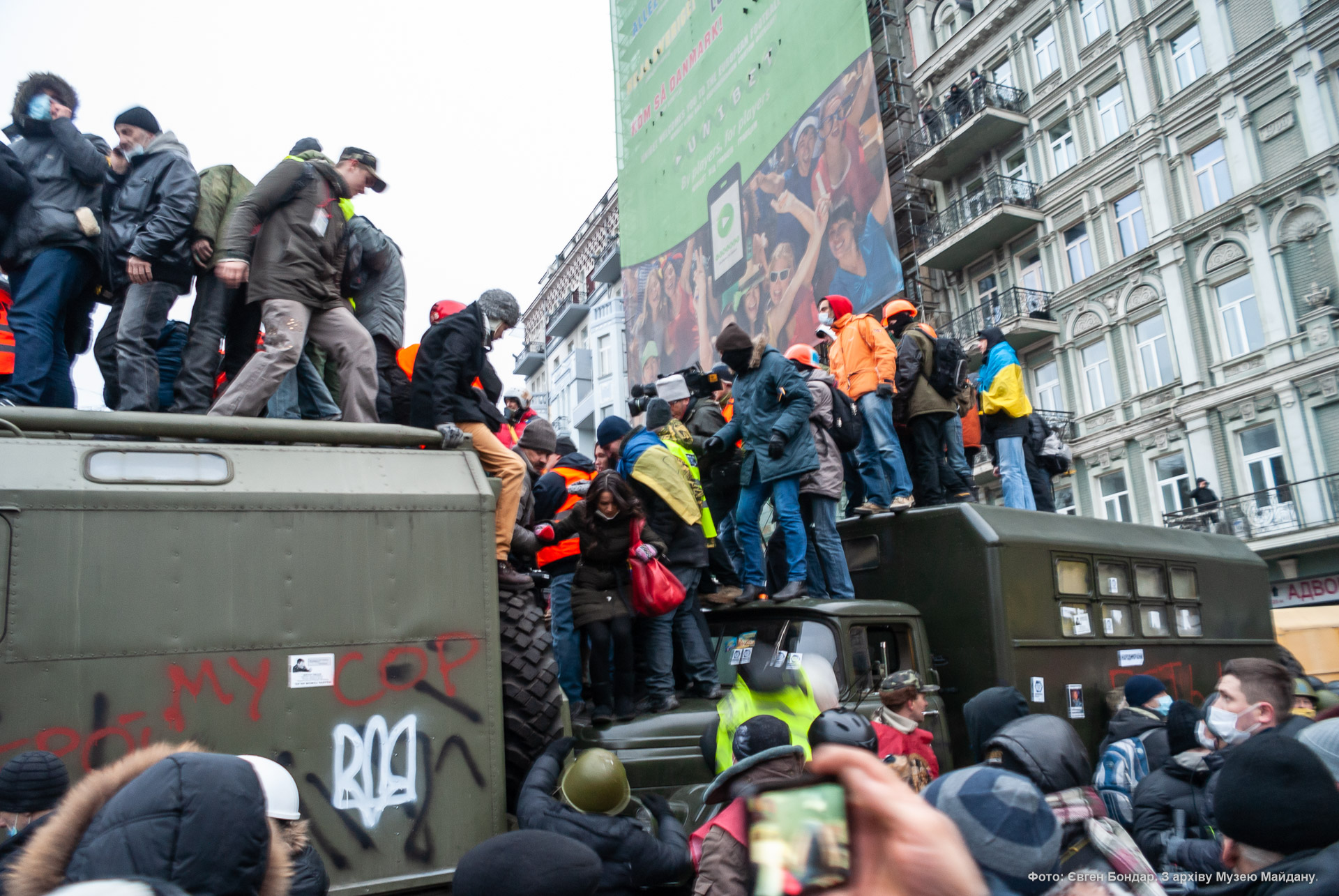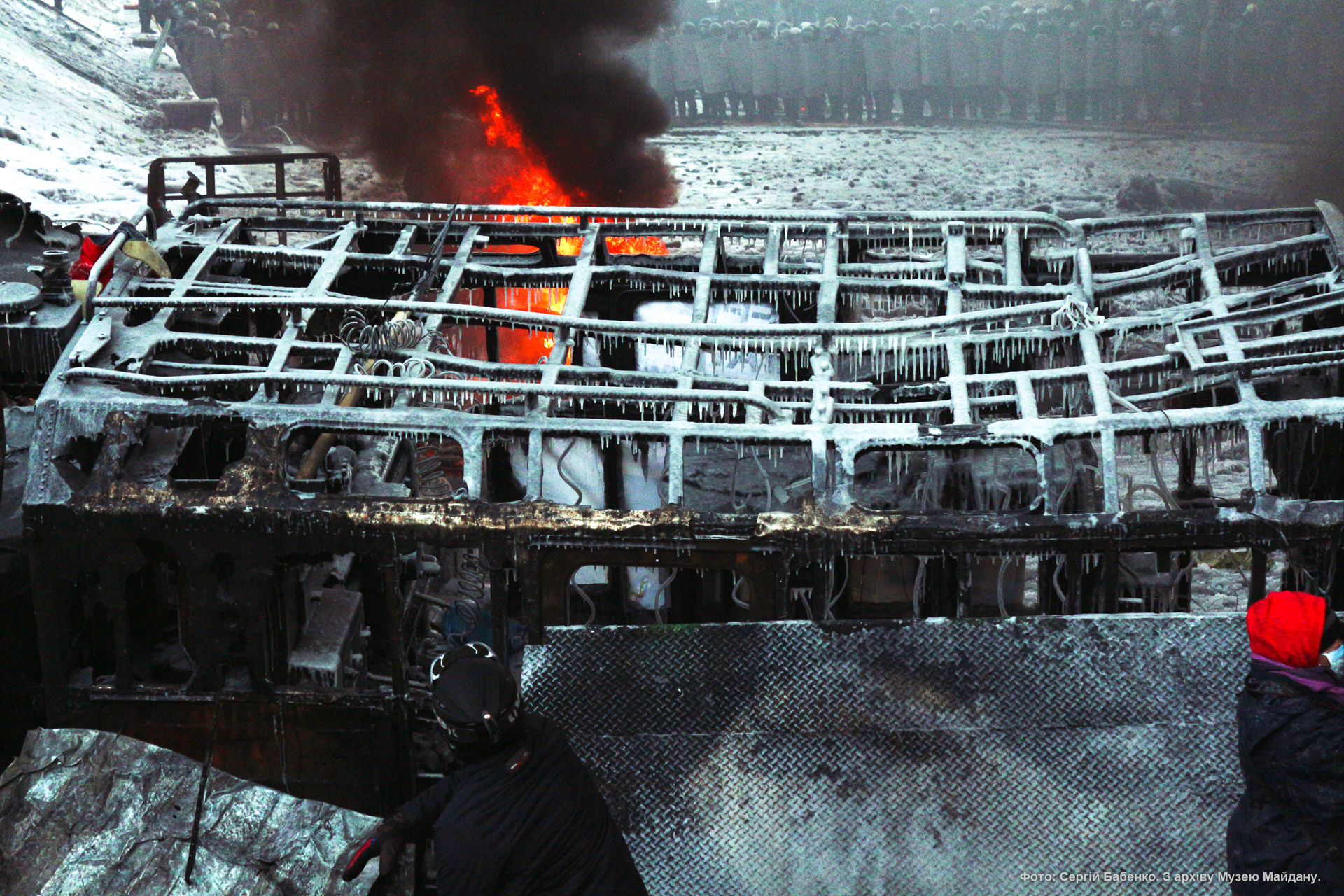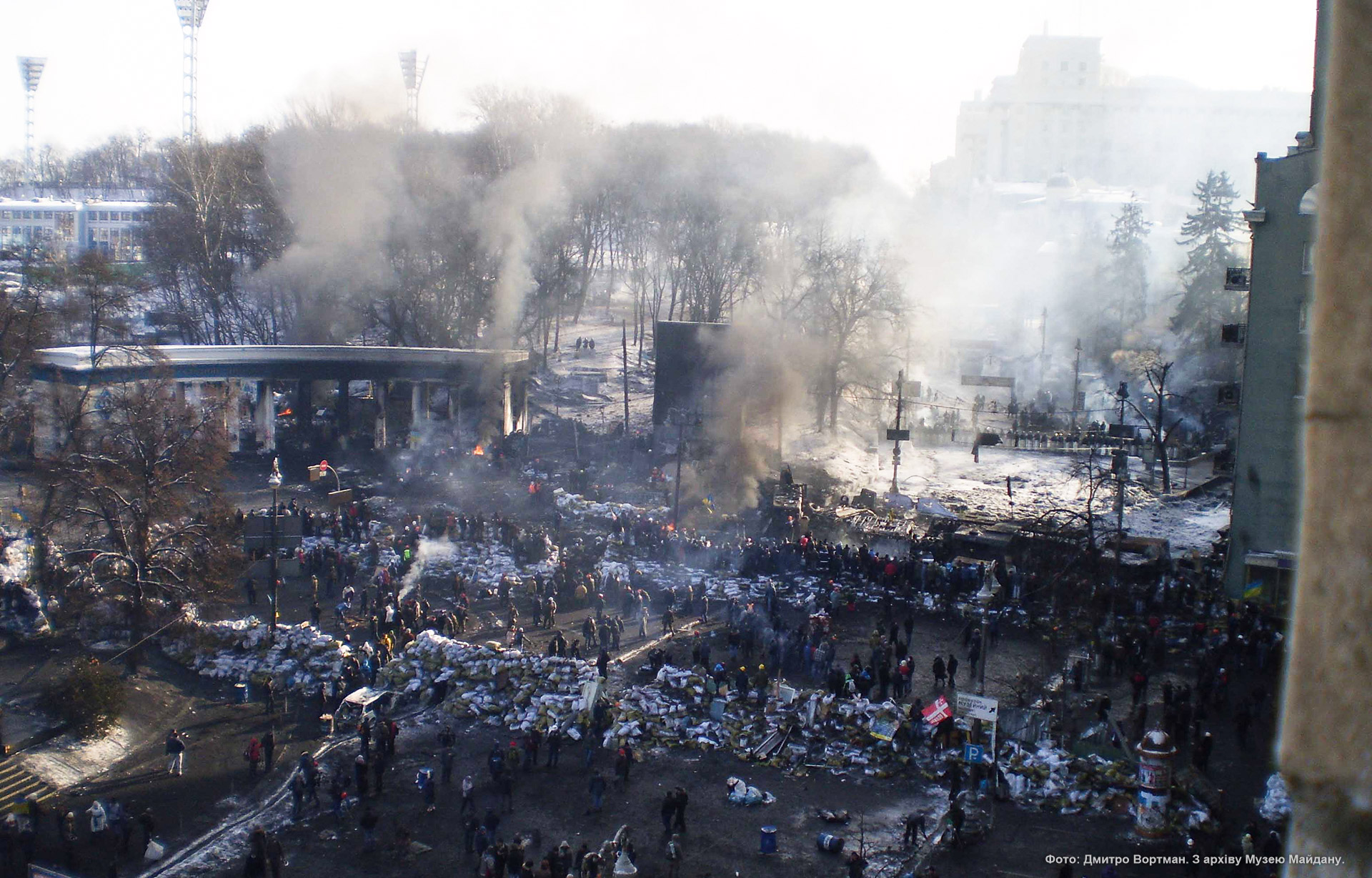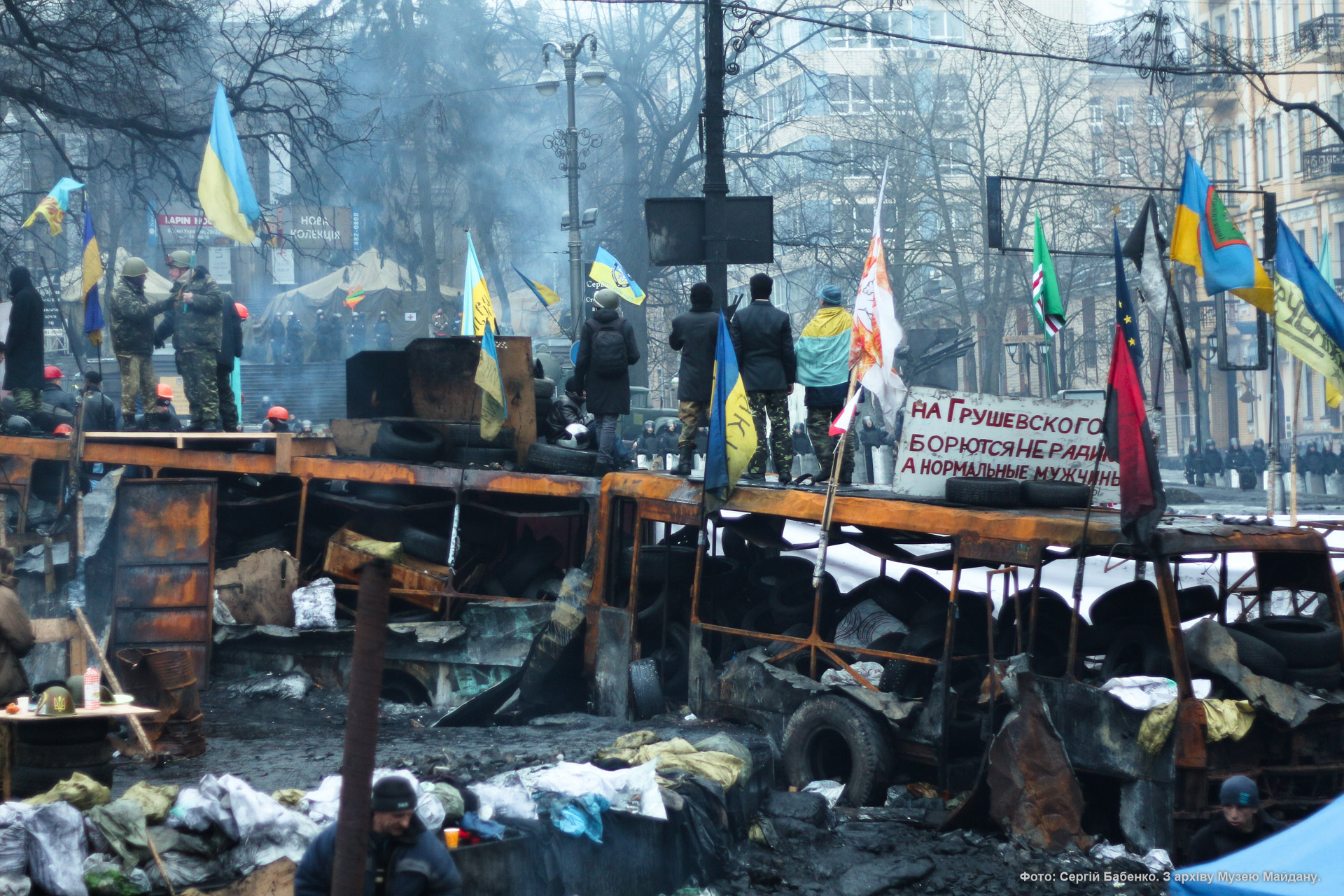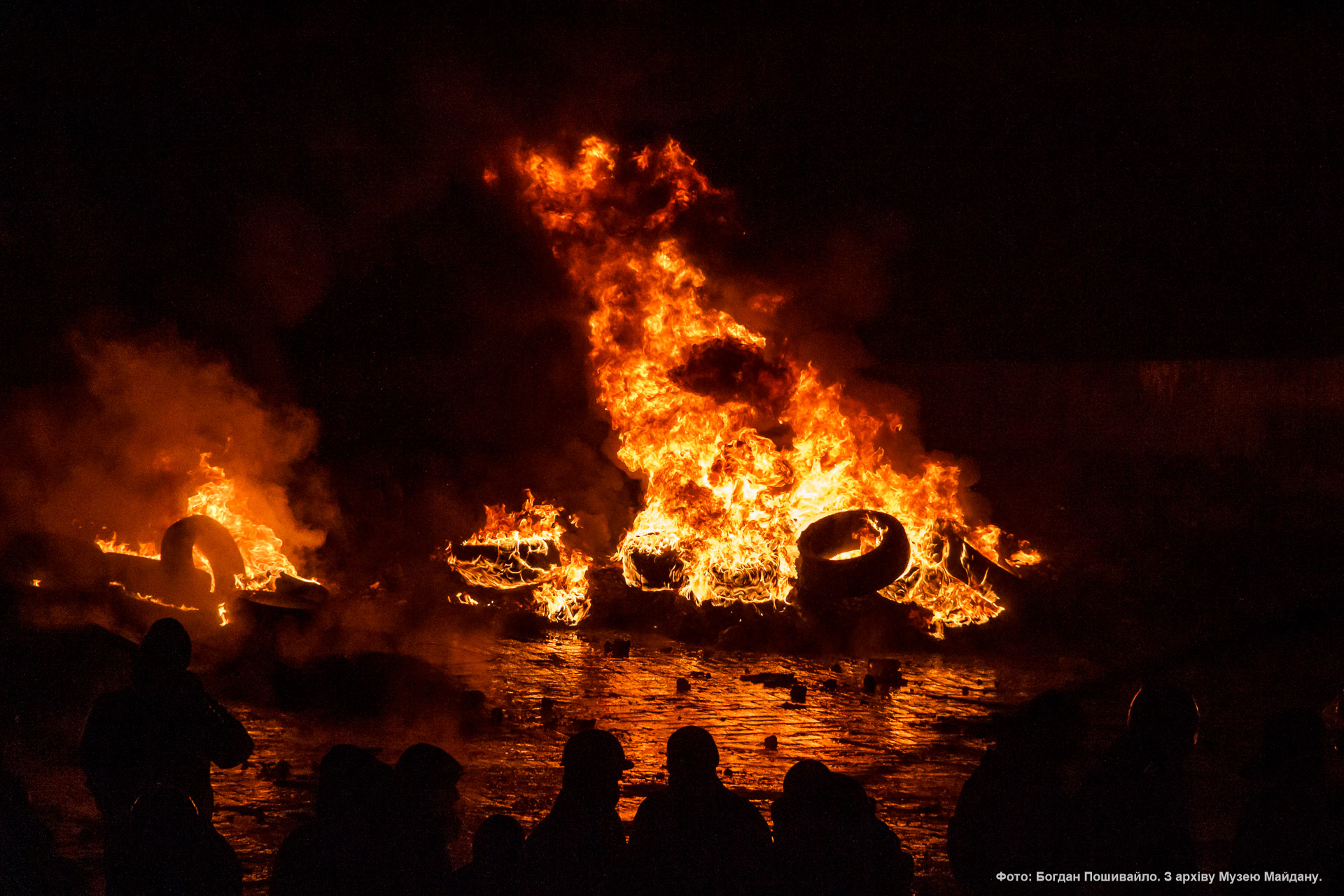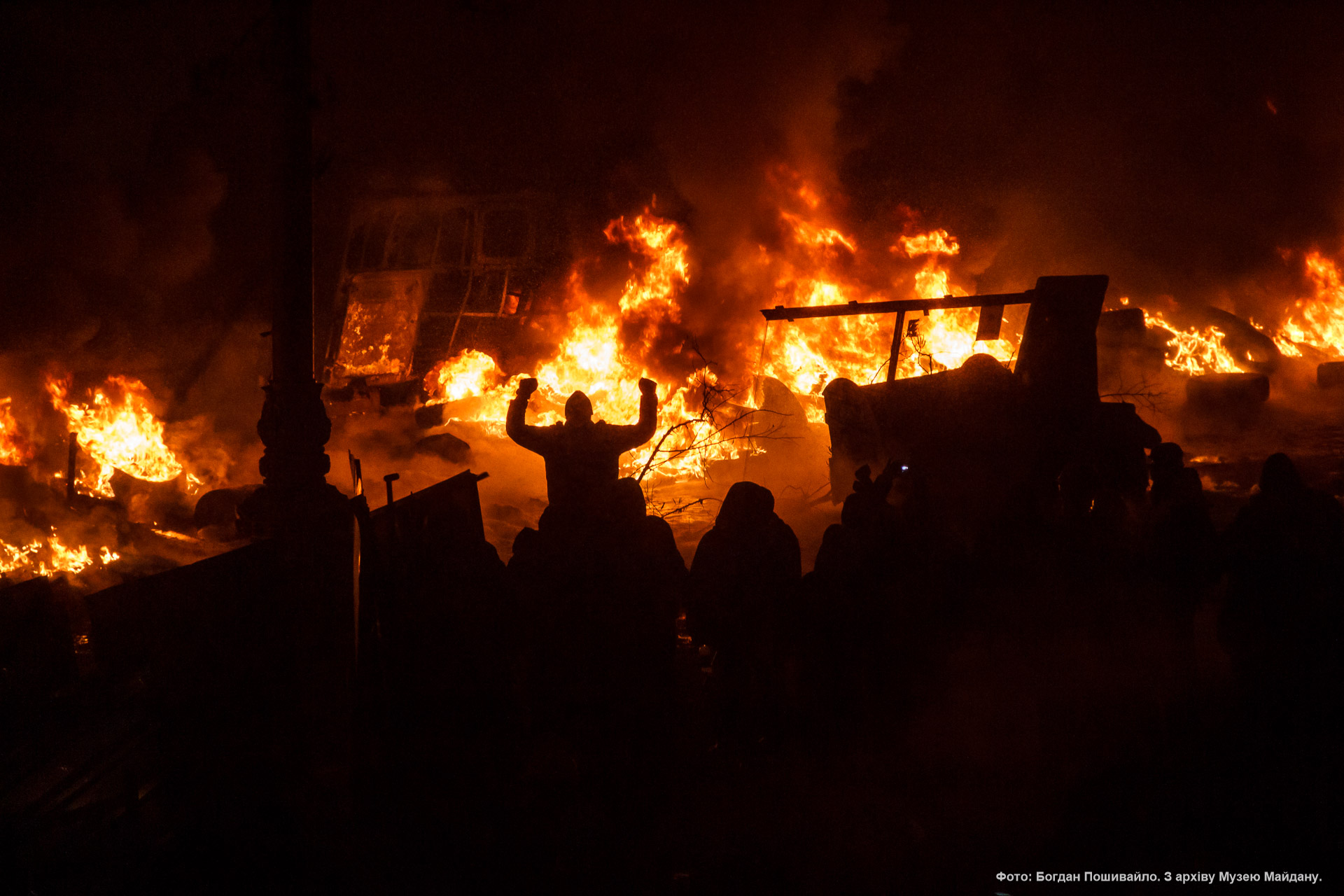
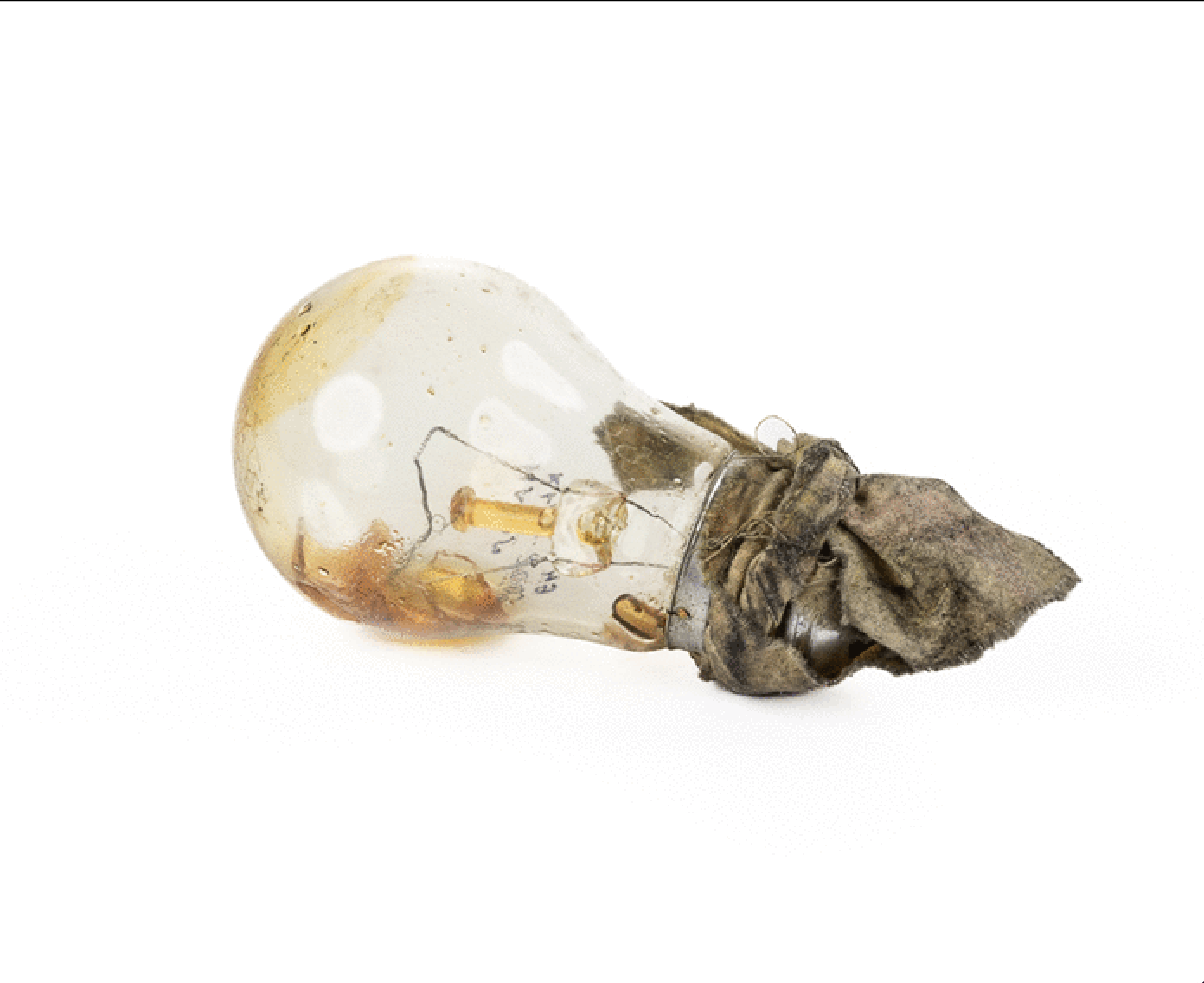
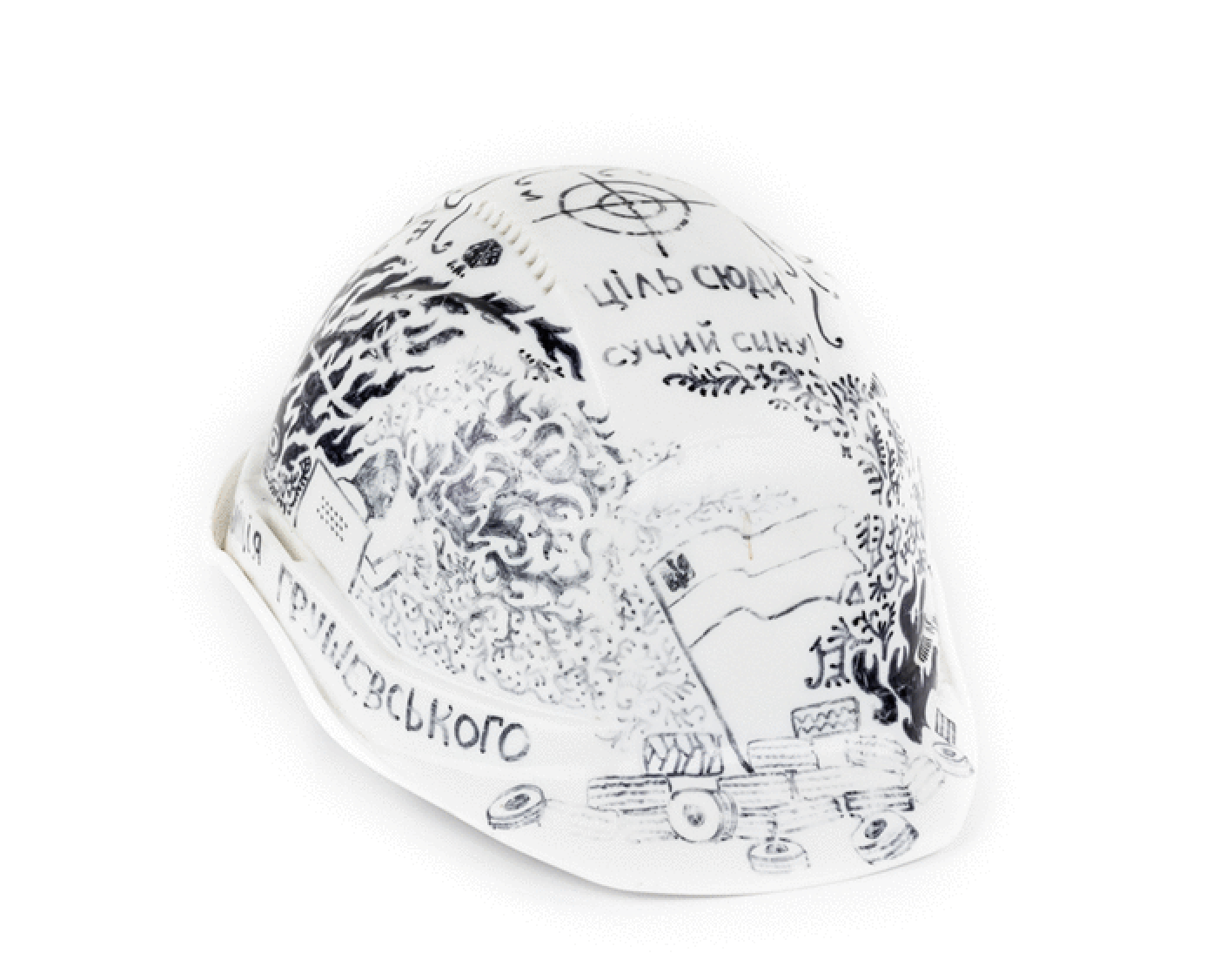
Barricade on Hrushevskoho1 Hrushevsky street
The adoption of the dictatorial laws by the Verkhovna Rada on January 16, 2014, changed the course of the Revolution of Dignity. In essence, these laws treated the participation of citizens in a peaceful protest as an offense, in some cases criminalized. The authorities intended that these laws would allow the security forces to finally suppress the protest and authorize the persecution of Maidan participants. The ban on wearing camouflage clothing and any chevrons, masks, medical bandages, or helmets at rallies, driving in columns of more than five cars, and several other absurd prohibitions all contributed to the radicalization of the protest.
On January 19, after the morning assembly on Maidan, the protesters marched through European Square to the Verkhovna Rada to continue their protest outside the building. On Mykhailo Hrushevskoho Street, police officers blocked their way. Soon, the struggle between the parties escalated into violent clashes. By the end of the day, it was a violent confrontation with police using stun grenades, and firing rubber bullets and Molotov cocktails at the protesters. Police officers also used water cannon, although the law prohibits it in sub-zero temperatures.
Protesters used paving stones, the same Molotov cocktails, and pyrotechnics. The Maidan protesters formed a line of fire curtains to hold back the offense. The most common material for the ‘curtain’ were car tires, which, once lit on fire, produced thick acrid smoke.
At the same time, new barricades were being erected on Hrushevskoho Street, forming several lines of defense. The first line was built between the Parliamentary Library and the Humanitarian Building of the National Academy of Sciences of Ukraine (NASU) (4 Hrushevskoho Street) and completely blocked the street. Two shorter barricades partially blocked the roadway and sidewalk next to the main entrance to the Humanitarian Building of the NASU, with the operational medical center. Later, another line of defense appeared next to the colonnade of the Dynamo stadium near the clashes.
In the first days of the clashes, hundreds of Maidan activists were injured. One of the first victims was Lviv seismologist Yurii Verbytskyi. He was admitted to the hospital for wounds he got on Hrushevskoho Street. On the night of January 21, he was kidnapped from the hospital, brought outside of Kyiv, and tortured. On the morning of January 22, after another ceasefire, the Berkut special forces unexpectedly launched an offensive. On that day, some protesters were fatally wounded: Serhii Nihoian (Armenian), Mikhail Zhiznevsky (Belarusian), and Roman Senyk (Ukrainian).
On the evening of February 18, 2014, during the storming of Maidan, security forces seized the barricade on Hrushevskoho Street and partially dismantled it to allow APCs to pass through.
Як це було...
A memory from a participant of the events:
…Ambulances worked very well on Hrushevskoho Street. At first, they were standing under the library, and it was very convenient for us. You carry the wounded, and the ambulance turns around and opens the door. But then, when the gas and bullets came close, they moved to the Ukrainian House. And it was hard…
Sign up for a tour
Сontacts
National Memorial Complex of the Heavenly Hundred Heroes - Museum of the Revolution of Dignity 9 Lavrska Street, building 20, Kyiv, 01015
+38 044 229 40 13 maidanmuseum@gmail.comOur socials:
«Terra Dignitas AR»
It is the first attempt to "revive" the Kyiv Maidan of 2013-2014 and recreate the image and spirit of the historical events of the Revolution of Dignity by means of augmented reality.
Your opinion is important to us. We need to hear from you both a kind word and constructive comments. This contributes to the improvement of our work.

